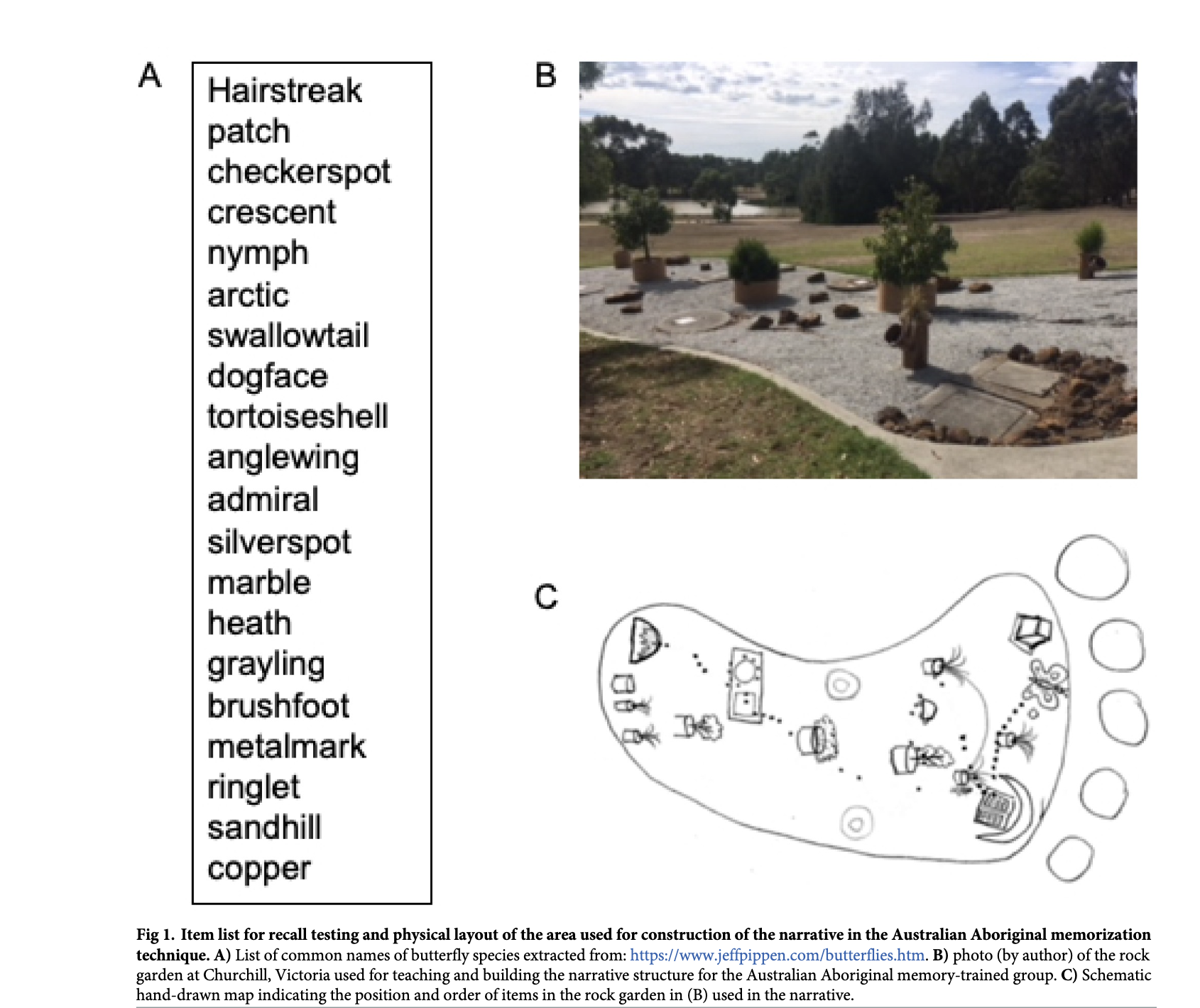Narrative Memory, Loneliness, and a Peculiar Book Club
Newsletter #2
Welcome to Week Two!
Thank you for all the delightful engagement during Week One. I’m actually planning on this being a bimonthly newsletter but I was dropping in content as I came across it and it filled up a week early.
This week: an Australian Aboriginal narrative memory technique, loneliness is an emergency, and a book club for peculiar minds.

BE THE SPARK - Thoughts on Teaching and Learning
In a bit of life synchrony, two of my dear friends have been madly studying for boards (neuropsychology and pharmacology) at the same time as I have been working to secure a new grant on how to make assessment and grading less aversive in biology education. One of these friends shared this intriguing new article on a new technique for memorizing long chains of information, which is often required of medical professionals: Australian Aboriginal techniques for memorization: Translation into a medical and allied health education setting.
According to the authors, systems for remembering and communicating complex material predate writing, and archaeological evidence supports the use of artefacts combined with narrative and song to support memory. Present-day Australian Aboriginal societies rely on “songlines” to transmit informations about laws, locations of season food, political relationships within and between tribes, and more. These songlines are built with intricate narratives and are adaptable, modified with new information, and are usually tied into locations through use of reference to wildlife and landmarks. These techniques bear resemblance to the famed “memory palace” technique for remembering vast stores of information, in which each item of a word list or other bin of information is mentally tied to an object in an ever-expanding house, thereby tying semantic (fact) memory to spatial (location) memory.
The paper shares two different studies. The first study compared the aboriginal method with the memory palace method and a lack of instructional method in first-year medical students (n = 76) memorizing simple word lists. In the memory palace condition, students were encouraged to use a familiar space like their childhood home, and in the aboriginal method condition, an experienced Australian Aboriginal educator walked students around a rock garden on campus and instructed them in the method of constructing a place-based story out of the items.

In the second study, undergraduate biology students (n = 49) used the aboriginal method in the course of their regular study and then answered questions about the experience.
While observed differences between the memory palace and the Australian Aboriginal method were subtle, the latter technique evidenced superior effects for recalling items in the order they were listed, which can be important for the types of information that health science students are required to learn (e.g., metabolic processes, neural transmission). The undergraduates reported the technique to be effective and enjoyable.
As with all studies, this one isn’t perfect - the fact that the memory palace was all imagined whereas the Australian Aboriginal technique involved walking through a physical location is one weakness that jumps out at me - but nonetheless it presents an interesting alternative grounded in indigenous wisdom. While to incorporate training in this technique that is culturally sensitive would require developing relationships with experienced Australian Aboriginal Educators (as these researchers did), the principle of incorporating story and narrative into memory palace techniques might be a rich avenue for future exploration.
HIVEMIND - On Social Neuroscience & Our Synchronous Selves
In the New York Times last week, writer Kristen Radtke concludes: Loneliness is an emergency.
And in an excellent Twitter thread promoting what looks like an excellent new book on distributed cognition, science writer Annie Murphy Paul considers the cognitive and performance benefits to shared attention.
MONSTERS - Thoughts on Uncertainty, Anxiety, and Mental Health
In The Chronicle of Higher Education, neuroscientist and trauma-informed pedagogy specialist Mays Imad argues that colleges need to prioritize campus mental health from the ground up, and comprehensively, rather than haphazardly or when emergencies arise.
EMOTION & MOTIVATION - Shot Out of a Cannon
One of my departmental colleagues always says returning to real life after sabbatical feels a bit like being shot out of a cannon—one usually works intellectually quite hard on sabbatical, but there is just a much different level of physical effort and mental coordination required for pacing around a classroom and jetting from meeting to meeting and being up late grading. I feel like many of us across the globe, in and out of academia, (at least the lucky ones with the sorts of flexibility that allowed for remote work and quarantine) are now in that position, returning to more typical levels of social life after a long, long hiatus. For some of us, it also means returning to in-person work after a long period of working from home. It is probably going to be exhausting.
If this applies to you, what will be your strategies for mitigating (a different flavor of) burnout and exhaustion? Would love to hear in the comments.
INCIDENTALLY - A Book Club for Peculiar Minds
If you enjoy both book clubs and popular science that veers into the strange and the macabre, then consider joining the new Peculiar Book Club! It is organized by my book sibling (we share a literary agent, the wonderful Jessica Papin of DG&B) Brandy Schillace and the first season includes illustrious guests like Mary Roach and Carl Zimmer. And unlike those fancy book clubs you may have been eyeing on sites like Lierati.com, this one is for free!
As always, if you enjoyed this post, feel free to tell a friend. Or keep in touch on Twitter, check out my essays on my website, or give one of my books a whirl!